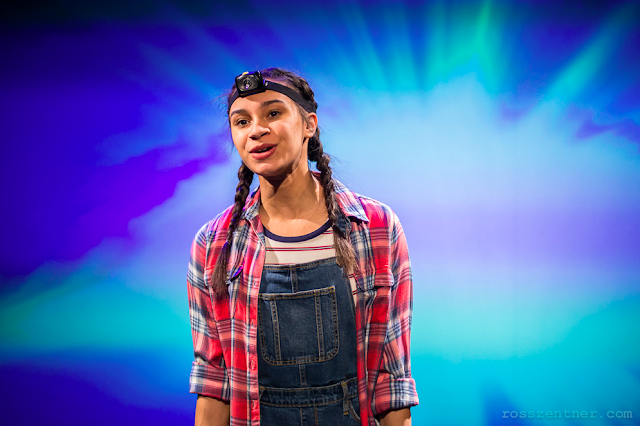A young-adult, sci-fi mystery takes the stage
"I usually write plays that I want to see," laughed playwright Reina Hardy on WUWM's Lake Effect radio show last week. Hardy isn't alone in the type of theater she craves. A quick run through her catalog of work reveals themes of fantasy and science that tend toward a youthful appeal.
No doubt Hardy's refreshing approach is one reason why her latest world premiere, Annie Jump and the Library of Heaven, was picked for Renaissance Theaterworks' 2017 Br!nk New Play Festival. Three additional productions will also be mounted across the country within the coming year, thanks to the National New Play Network. It seems theater companies agree with Hardy: there is ample space for Annie Jump on our stages.

Annie Jump and the Library of Heaven is the story of titular character Annie Jump, a 13-year-old science prodigy living in the small town of Strawberry, Kansas, with her alien-hunting dad. He's kind of the town crackpot. Extraordinary things begin to happen when the skeptical Annie is visited by the out-of-this-world Althea, an intergalactic supercomputer manifesting as a teenage mean girl with killer hair. Althea alleges that Annie is "the chosen one" of Earth, destined to guide humanity to link up with other intelligent beings in the universe.
While it all sounds very extraterrestrial, Annie Jump is as much about our human connections and community as it is about our place in the stars. With all her genuine genius, Annie (Reese Parish, a junior at Nicolet High School) struggles to relate to her "soft doctorate"-holding, E.T.-obsessed father, Dr. Jump (Jonathan Gillard Daly). The new, nerdy kid in town, KJ Urbanik (Jarrod Langwinski), becomes a lesson in the wrong way to make friends - and having the courage to right those wrongs. Althea (Rachael Zientek) must learn that humans make choices based on loyalty and love, rather than simply the quest to reach their full mental potential.
There's a lot in Annie Jump that works as young-adult fodder: the ages of the protagonists, the sci-fi and fantasy, even the humor. Rachel Zientek is laugh-out-loud funny as Althea, her tone a sort of whiny new-age valley girl, armed with whip-smart comebacks and a spot-on blasé attitude. There's lots of fabulous hair tossing and disinterested nail picking. She's pretty perfect.
As Althea's human supercomputer-in-training, Reese Parish shines. There's something so very bright and poised in Parish's manner that makes her a joy to behold. Her Annie exudes believable brain power and a sincere blend of adolescent confusion and optimism.
As Dr. Jump, Jonathan Gillard Daly taps into what he does so well: being likable. His is a Dr. Jump you root for and sympathize with; funny and a little heartbreaking. It did, however, feel like Daly and Parish took some time to warm up to the father-daughter dynamic - but perhaps that was the plan all along. Their connection comes through in the end.
The only other adult we see in the story is teacher Mrs. Gomez, played by the delightful Karen Estrada. Estrada should play a hilariously tipsy, ukulele-toting, "I'm gonna make out with my husband," PhD-in-Physics-trapped-as-a-Spanish-teacher more often; she really nails it.
Yes, in a play about a girl genius and female supercomputer, even Mrs. Gomez has an affinity for science. Reina Hardy has left no woman without a brain. Annie Jump and the Library of Heaven boasts moments that are highly cerebral, brought to life through these incredibly intellectual female characters. It's immensely satisfying. If there's a young adult in your life, particularly a young lady, tell them about Annie Jump. Heck, buy them a ticket and make it a date.
The cool thing about Hardy's script is how it falls in the in-between. The journey of Annie Jump would mean as much to a teen as it would a grown-up, and we need more theater like that. Annie Jump and the Library of Heaven aims to bridge the gap in theater-going age groups and link up fresh, youthful audiences to that mysterious, perhaps-undiscovered universe of the stage.
Photo Credit: Ross Zentner




